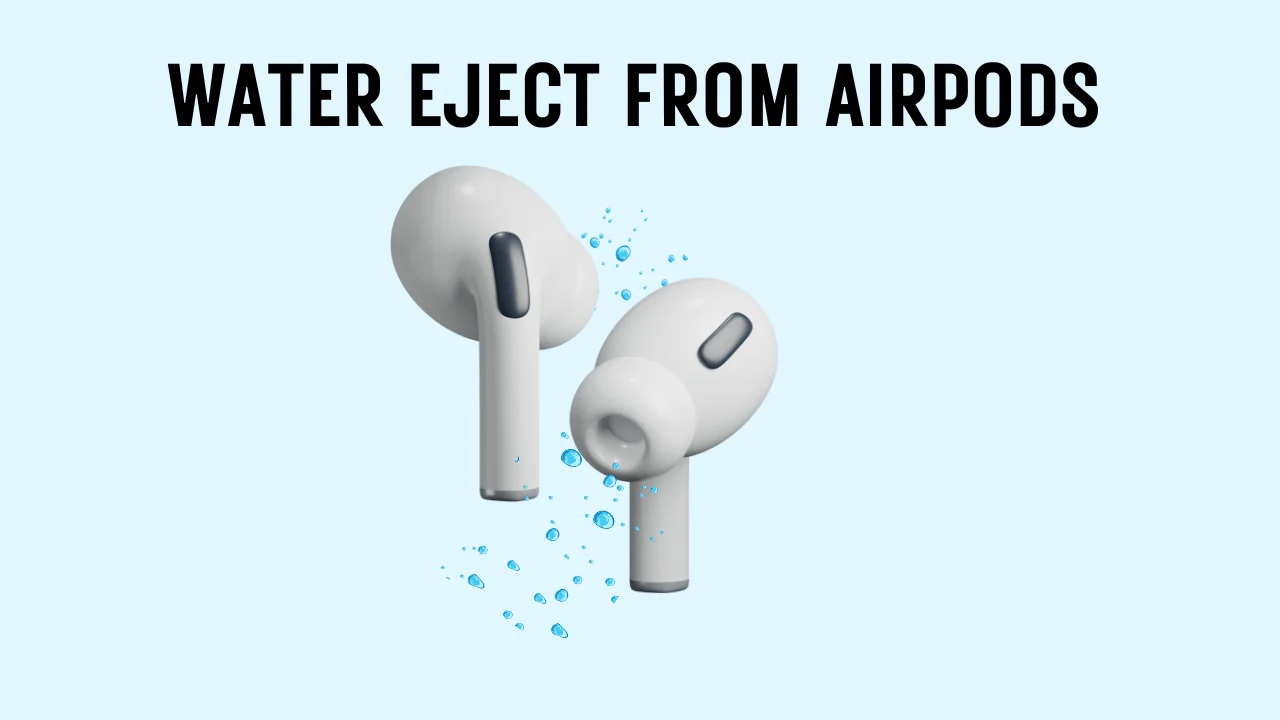Water Eject Sound for AirPods: The Safest Way to Clear Out Moisture

Sweat, moisture and dust can easily muffle AirPods. It is on the risk of getting damaged if you simply wipe or prod around. Because of this, safe and hands-free cleaning techniques are growing in popularity. Using a water eject sound to gently force any trapped water or debris out of the mesh is one such technique.
This approach relies on sound frequencies to shake lose any blockages without opening the device. It’s simple, safe and doesn’t require extra tools or risky DIY tricks. You can visit our main home page for the tool. Let’s explore how it works and when to use it.
Why Your AirPods Sound Muffled or Quiet
AirPods can start sounding muffled or lower in volume over time, even if they appear clean from the outside. Moisture from sweat, rain or even steam can slip into the tiny audio unit mesh. This blocks the sound waves. Dust, earwax and pocket lint are also common culprits that settle inside and reduce clarity. These issues often build up silently which makes your AirPods sound worse without warning.
Sweat and Moisture Buildup
Even a light workout can expose your AirPods to enough sweat to block the vents. Moisture tends to settle inside and doesn’t always evaporate on its own.
Earwax Obstruction
Earwax may not be visible on the outside but can clog the mesh inside the sound unit area. This is one of the most common causes of distorted or low-volume sound.
Dust and Lint Exposure
If you keep your AirPods in pockets or bags, it can lead to dust or lint accumulation. These particles sneak into the grill and affect sound transmission.
Steam or Humidity Damage
Using AirPods in humid environments like bathrooms or during showers can allow steam to enter the housing. It lingers longer than water droplets and quietly damages clarity.
Improper Cleaning Attempts
If you are using pins, sharp tools or blowing air into the audio unit, it can actually push debris deeper. This causes more harm than good and might even damage internal parts.
How to Use Speaker Cleaner to Fix Muffled AirPods
If your AirPods sound weak or muffled, using our Speaker Fixer tool can help you fix the issue in seconds. You don’t need any app to download. It works by playing a carefully tuned sound that vibrates moisture and debris out of the AirPods’ speaker grills. This method is completely safe and doesn’t require opening the device or poking around. Just a few taps and your AirPods start sounding crisp again.
Steps to use our tool:
- Visit our Speaker Fixer tool on your phone or tablet.
- Choose the “Water Eject” mode from the options available.
- Place your AirPods close to your device’s sound unit and tap the play button.
- Let the sound run for 30–60 seconds per side.
- Test your AirPods — repeat if necessary for better results.
Why Do You Need to Clean Your AirPods?
AirPods are small but powerful audio devices. Their compact design makes them easy to clog. Without regular cleaning, dirt and moisture can block sound output and even damage internal parts. Over time, buildup can cause distorted sound, lower volume or connectivity issues. Cleaning them not only improves audio quality but also extends their lifespan.
Better Sound Quality
A clean AirPod speaker delivers crisp and full-range sound as intended. The dust and wax muffle tones and lower clarity.
Prevent Long-Term Damage
The trapped moisture or debris can corrode internal components over time. This can lead to permanent hardware damage.
Maintain Battery Performance
Blocked vents can cause overheating or internal stress. These may affect how long your AirPods last on a charge.
Improve Microphone Functionality
Cleaning isn’t just for the speaker. The clogged mic holes can make your voice sound distant during calls.
Boost Resale or Trade-In Value
Clean and well-maintained AirPods retain more value. A simple cleaning routine keeps them in top condition.
Dos and Don’ts While Cleaning AirPods at Home
Cleaning your AirPods the wrong way can do more harm than good. Follow these simple do’s and don’ts to avoid damaging your device during the process.
Do’s
- Use a soft, dry cloth to wipe the outer surface gently.
- Try sound to remove moisture safely without disassembly.
- Use a soft-bristled brush to clean the mesh lightly.
- Store your AirPods in a clean, dry case when not in use.
Don’ts
- Don’t insert sharp objects like toothpicks or needles — they can puncture or break mesh.
- Don’t use alcohol or harsh liquids directly on the grill.
- Don’t blow air into them forcefully — it can push dirt deeper inside.
- Don’t submerge AirPods in water or expose them to steam.
Conclusion
Keeping your AirPods clean isn’t just about looks. It’s about performance, clarity and long-term durability. Simple habits like using a soft cloth or relying on sound-based cleaning can make a big difference. Tools that generate a water eject sound like speaker fixer offer a smart and hands-free way to clear out moisture safely. Your AirPods will stay sounding fresh and working their best with just a little care.
Frequently Asked Questions
Can sound waves really remove water from AirPods?
Yes. The low-frequency pulses can push water out from earbud speakers through vibration. Many users report clear improvements after using sound method.
How often should I clean them to keep sound quality high?
Experts recommend cleaning earbuds weekly if used daily or at least every two to four weeks. Regularly wiping speaker grills helps prevent buildup.
Is it safe to use compressed air or blow into them?
No. The compressed air may push moisture deeper while direct blowing can add humidity to the unit’s interior. Both methods risks causing more harm than good.
What should I do if the sound is worse after cleaning it?
If the audio worsens, you may have dislodged debris deeper into the mesh or damaged internal parts. In such cases, stop cleaning and consider professional help or Apple support.
